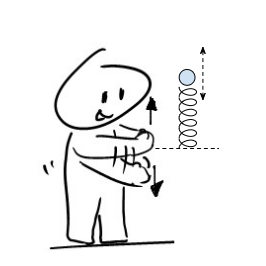We know a way of measuring energy of a electromagnetic wave is the [Poynting vector][2], which is independent of the frequency.
Energy of EM wave in some volume $V$ is measured by integral of the Poynting energy density over that volume:
$$
E_{wave} = \int_V \frac{1}{2}\epsilon_0 E^2 + \frac{1}{2\mu_0} B^2 dV.
$$
The Poynting vector does not "measure" energy of EM wave, but it is directly related to its intensity, that is, how much energy comes per unit time per unit area perpendicular to direction of EM energy flux in space. So that total energy coming through any simply connected and oriented surface $\boldsymbol {\Sigma}$ per unit time is:
$$
\frac{dE_{income}}{dt} = \int_\Sigma d\boldsymbol{\Sigma} \cdot (\mathbf E\times \mathbf B/\mu_0 ).
$$
When the wave is a localized pulse, after it passes entirely through the surface, $E_{income} = E_{wave}$. So the Poynting vector is related to how fast the energy passes through the surface, not to total value of the wave energy.
In my opinion the guy in the image is spending more energy for the wave with higher frequency. But the Poynting vector, doesn't care. So is there another property of Electromagnetic Waves that accounts for the energy that the guy used to make the wave?
The image does not explain what the wave represents. If it is rope oscillating due to forced oscillations of the end, and if we are comparing two oscillations with same amplitude of oscillation (elongation), then yes, the guy is spending more energy per unit time to maintain oscillation at higher frequency. But this is because the same amplitude of oscillation at higher frequency means amplitude of velocity is much higher, and thus both kinetic and potential energy are higher and more gets dissipated per unit time (this requires some calculations to show). Energy of the rope consists of both the potential and the kinetic component, and at higher frequency, both these components are higher, despite the amplitude of motion being the same.
With EM wave, it is similarly sum of two components, electric and magnetic energy, whose values are related to frequency. These energies are proportional to square of electric and magnetic field, and these in turn depend on how fast one oscillates with charges that generate those wave fields. So in a sense, energy of EM wave generated does depend on the frequency of the forced oscillations of the charge, but this dependence is fully taken into account in the Poynting energy formula above, via the amplitudes of electric and magnetic field. The higher the frequency of oscillation, the stronger the electric and magnetic field generated. Electric field strength in the wave zone (far enough from the charge) is proportional to acceleration of the charge, thus to square of frequency of oscillation and to amplitude of charge's oscillations $y_0$:
$$
E \propto \omega^2 y_0.
$$
$$
B \propto \omega^2 y_0.
$$
Thus the Poynting energy density (energy per unit volume), depends on frequency as $\omega^4$, if we somehow keep the charge oscillation amplitude constant. This is approximatelly valid for Poynting energy density e.g. in case it is due to the Rayleigh scattering in atmosphere or water, where the charge oscillation amplitude is constrained by the size of molecules, or density fluctuations. Hence intensity of the Rayleigh scattering goes as $\omega^4$, and thus intensity of blue scattered light is higher than that of red light, even while both are associated with charge oscillations of similar amplitude.

